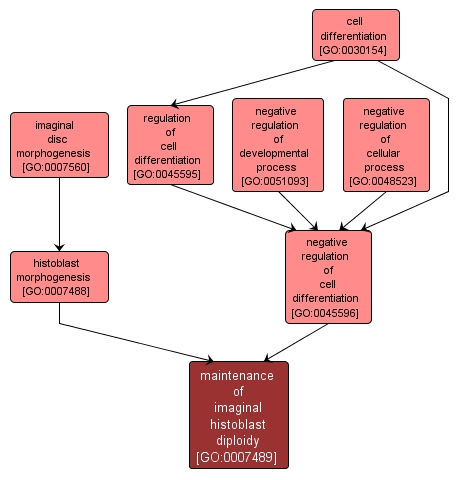GO TERM SUMMARY
|
| Name: |
maintenance of imaginal histoblast diploidy |
| Acc: |
GO:0007489 |
| Aspect: |
Biological Process |
| Desc: |
The negative regulation of the differentiation of polytenized larval hypodermal cells from abdominal histoblasts. The abdominal histoblasts remain a small cluster of diploid cells among the polytenized larval hypodermal cells. |
|

|
INTERACTIVE GO GRAPH
|














